Tell me about boutique coffee
This book mainly introduces two kinds of top coffee in the world, GOURMET and Lanshan No. 1, and other boutique coffees from other places. The origin and present situation of the top boutique coffee, and the judgment standard of the fine coffee. The characteristics of top coffee: boutique coffee beans, boutique production process.
An overview of top boutique coffee editors
Mainly introduce two kinds of top coffee in the world, GOURMET and Lanshan No. 1, and other boutique coffees from other places. The origin and present situation of the top boutique coffee, and the judgment standard of the fine coffee. The characteristics of top-end coffee: high-quality coffee beans, the process of making high-quality coffee
GOURMET
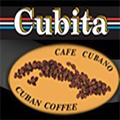
Cubita belongs to: Cubita [Amber Coffee]
Origin: Crystal Mountain, Central Mountains, Cuba
Output: less
Level: AA level
Evaluation: ★
Summary: the deep-roasted coffee (Gourmet) category caters to the tastes of the most demanding gourmets. Including the production process, this coffee is favored by diners, the taste is clean and meticulous, with a slightly sour taste, not strong but very long-lasting, her unique sweet melon and fruit aroma will give off a perfect taste after cooking; excellent balance, taste saturated, strong, smooth taste, mellow and smooth taste with slightly bitter and light sweetness like wine. Gold typeface GOURMET hardcover logo is the symbol of gold powder.
Lanshan No.1
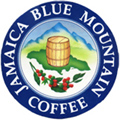
Blue Mountain Coffee, belonging to: Blue Mountain Coffee [Blue Mountain Coffee]
Origin: the Blue Mountains of Jamaica
Output: very little
Level: top level
Evaluation: ★
Summary: the best blue mountain coffee bean coffe is NO.1 peaberry, also known as pearl beans, is a carefully selected small round beans in the products at an altitude of 2100 meters, the boutique in the boutique. The aroma is very full-bodied, with long-lasting fruit flavors. Its flavor is rich, balanced, fruity and sour, and can meet people's various needs. In addition, the high-quality fresh Blue Mountain coffee has a long-lasting flavor, as drinkers say, with a lingering aftertaste.
2 concept editor boutique coffee-coffee beans
Boutique coffee (specialty coffee) is also called "specialty coffee" or "select coffee". It refers to coffee made from a small number of raw beans with excellent taste grown in an ideal geographical environment. Depending on the special soil and climatic conditions in which they grow, they have outstanding flavor. After strict selection and classification, this kind of coffee can be regarded as a selection of coffee beans because of its hard texture, rich taste and excellent flavor.
Fine Coffee-drinking Coffee
Coffee made from fine coffee beans. Now the coffee is mainly made by hand-brewing coffee to give full play to the flavor of the coffee bean itself. Boutique coffee does not have a bad effect on people's health, but drinking it in moderation is beneficial.
The Origin and present situation of Fine Coffee
The term "fine coffee" was first put forward by Ms. Knudsen of the United States in Coffee and Tea magazine. At that time, Ms. Knudsen, as a coffee buyer of B.C. Ireland in San Francisco, was very dissatisfied with the neglect of the quality of raw coffee in the industry, and even some big roasters mixed a large amount of Robesda beans in the comprehensive beans, so she put forward the concept of fine coffee to advocate the improvement of the quality of the industry. This term is used to describe coffee beans with distinctive flavor characteristics that grow in a special environment. Its use in international coffee conferences makes it spread rapidly.
In fact, according to Ms. Knudsen, people started drinking fine coffee, but later, due to the growing demand for coffee, the discovery and use of new coffee varieties led to the decline of coffee quality. later, people even began to dislike this bad coffee and began to turn to other drinks. In this case, Ms. Knudsen re-made people realize the value of boutique coffee, which led to a boutique coffee boom. In the United States, there are enterprises and stores in pursuit of boutique coffee represented by Starbucks. The market for boutique coffee is also growing. In the 1990s, with the rapid increase of boutique coffee retailers and cafes, boutique coffee has become one of the fastest growing markets in the catering service industry, reaching $12.5 billion in the United States alone in 2007. Now boutique coffee has become the fastest growing coffee market. Coffee producing and importing countries around the world are aware of the great potential of the boutique coffee market, and continue to make efforts to the production and production of boutique coffee.
The judgment standard of fine coffee
At present, there is no clear judgment standard of fine coffee in the international community. Here, we will briefly explain the standards of the American Fine Coffee Association and the basic standards of coffee producing countries.
American Fine Coffee Association Standard:
1. Whether it has rich dry aroma (Fragrance). The so-called dry aroma refers to the aroma of roasted or ground coffee.
two。 Whether it has rich wet aroma (Aroma). Wet aroma refers to the aroma of coffee extract.
3. Whether it has rich acidity (Acidity). It refers to the sour taste of coffee, the combination of rich sour taste and sugar can increase the sweet taste of coffee liquid.
4. Whether it has rich alcohol thickness (Body). It refers to the concentration and weight of the coffee liquid.
5. Whether it has rich afterrhyme (Aftertaste). It refers to the afterrhyme of coffee, which is evaluated according to the flavor after drinking or spitting.
6. Whether it has rich taste (Flavor). Refers to the taste, the upper palate to feel the aroma and taste of coffee, to understand the taste of coffee.
7. Whether the taste is balanced or not. Refers to the degree of balance and combination between the various flavors of coffee.
Evaluation criteria for producing countries:
1. A variety of fine coffee. It is better to use Arabica inherent variety Tibica or bourbon variety.
two。 Is the altitude, topography, climate, soil and refinement of the cultivated land or farm clear? Generally speaking, the coffee with high altitude is of higher quality, and the fertile volcanic soil is the best.
3. The harvesting method and refining method are adopted. Generally speaking, it is better to adopt manual harvesting method and water washing refining method.
3 characteristics of boutique coffee editing characteristics of boutique coffee beans
1. Boutique coffee beans must be high-quality beans with flawless beans. It should have an outstanding flavor, not "no bad taste", but "taste particularly good".
two。 Boutique coffee beans must be excellent varieties, such as the original bourbon species, mocha species and Tippica species. The coffee beans produced by these trees have unique aroma and flavor, which is far from that of other tree species, but the relative yield is low. in recent years, in order to pursue the ability of disease and insect resistance and increase the yield, there have been many improved tree species, such as Kenya to promote a large number of high-yield rurial11 species, but the taste and quality are greatly reduced. Of course, you can't call it "boutique coffee".
3. The growth environment of boutique coffee beans also has higher requirements. Generally grow at an altitude of 1500 meters or even more than 2000 meters above sea level, with appropriate precipitation, sunshine, temperature and soil conditions. Some world-famous coffee beans also have a special geographical environment, such as the alpine clouds in the Blue Mountains, the free shade provided by Kona's afternoon "Flying Cloud", and the volcanic ash soil in Antigua, which provide conditions for the growth of boutique coffee.
4. The best way to harvest high-quality coffee beans is to harvest them manually. That is, only mature coffee fruits are picked to prevent coffee fruits with inconsistent maturity from being picked at the same time. Because those unripe and overripe fruits will affect the balance and stability of coffee taste, boutique coffee needs to be picked frequently and carefully during harvest.
5. High-quality coffee beans are refined by water treatment. The coffee beans with less impurities can be obtained by the water washing method, but if the water quality and time are not properly controlled during the fermentation process, the coffee beans will easily be infected with the sour taste of excessive fermentation. and dry beans also need to pay attention to timely re-inspection to prevent coffee beans from being contaminated by wet ground and sundries. Processed beans should be dried in time, and the drying should also have a certain degree. Generally, the moisture content of processed beans is 11% 13%. Insufficient drying can easily make beans moldy, and excessive drying can easily affect the flavor of beans.
6. Boutique coffee has a strict grading system. In general, raw beans are preserved as "parchment coffee beans" in the form of endocarp after processing, and the endocarp is removed before export. Go through a strict grading process to ensure the uniformity of quality. And its preservation and transportation in the process of protection is very important, such as temperature and humidity control, ventilation control, avoid odor adsorption and so on, if these do not do well, then no matter how high-grade beans will no longer become fine.
Fine Coffee-drinking Coffee
1. Fine coffee is made from boutique coffee beans. If the beans that make coffee are not boutique coffee beans, the coffee liquid produced cannot be called fine coffee.
two。 Boutique coffee is fresh coffee. Whether it's food or drink, of course, the fresh the better, and so is boutique coffee. High-quality coffee should keep the coffee beans fresh before making, including the preservation of baked beans, and grind the coffee beans into powder before making, which is also to retain its original and best flavor. The way of making hand-brewed coffee is such a way to make high-quality coffee, and it is also one of the coffee-making methods that can best retain the original flavor of coffee.
3. Boutique coffee is good coffee and is harmless to health. Different from coffee made with low-quality coffee beans, high-quality coffee uses high-quality coffee beans and freshly made coffee, which is harmless to health, and drinking in moderation is beneficial to the body and mind.
4. Boutique coffee has a rich and beautiful taste. Even if the coffee made of boutique coffee beans is not all fine coffee, it depends on whether it gives full play to the characteristics of coffee beans, whether it has a good taste, if not, it can not be called boutique coffee.
Development trend of boutique coffee
As long as it is delicious coffee, coffee consumers are willing to pay a high price; as long as delicious coffee is provided, consumers will not abandon coffee and the market will grow. "High-quality coffee represented by boutique coffee is a big business." Coffee producers and consumers have discovered this simple fact.
In recent years, coffee producing countries no longer blindly pursue high output while neglecting quality. Many countries have begun to introduce a new coffee evaluation system in order to arouse the enthusiasm of producers and promote the production of fine coffee. For example, Brazil began to implement the Cup of excellence coffee rating system in 1999 in order to better subdivide boutique coffee. And boutique coffee has become one of the fastest growing markets in the catering service industry, reaching 12.5 billion US dollars in the United States alone in 2007. All these can see the potential of the boutique coffee market, and the boutique coffee market will certainly grow stronger and stronger in the future.
Boutique coffee from all over the world
Civet Coffee (Kopi Luwak)
Civet Coffee is a recently invented coffee made from cat poop. It is the most expensive coffee among many.
Blue Mountain Coffee Blue Mountain Coffee
Is a more popular coffee, produced in Central America, Jamaica, the West Indies, with mellow, bitter slightly sweet, soft and smooth characteristics, and slightly sour, can make the taste more sensitive, taste its unique taste, is the best of coffee.
Alishan morphine coffee
Alishan Mar Coffee [1] belongs to alpine coffee and is a high-quality boutique coffee in Taiwan. It ranks first in Asia. Coffee trees are mainly planted in southern Taiwan and industrial areas such as Alishan in Chiayi County, Taiwan. due to the advantage of high altitude, it is not only suitable for growing tea, but also more suitable for growing coffee.
Mafeel is a language taken from the Zou people of the Alpine nationality in Alishan, which means "delicious". Alishan is the area where coffee is grown, while the coffee is grown by the Zou people themselves, and it is also named Mafeel, and the coffee grown belongs to Taiwan coffee. Due to the low production of Mazu coffee in Alishan, Taiwan coffee is rare.
Cuban Crystal Mountain Coffee (cubita coffee)
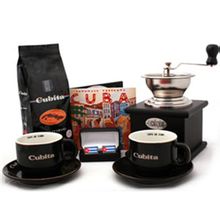
Cubita in Cuba, the cultivation of coffee is regulated by the state. The best coffee growing area in Cuba is located in the Central Mountains. Because this area not only grows coffee, but also produces quartz, crystal and other precious minerals, it is also known as Crystal Mountain. At present, Crystal Mountain Coffee is synonymous with top Cuban coffee.
The most representative is that "Cubita Coffee" is all produced in Crystal Mountain, Cuba, abbreviated as: Cubita, Chinese name: Amber Coffee. It also has a high reputation in the coffee industry. Cuban Crystal Mountain Coffee ranks first in the world. Crystal Mountain is adjacent to the Blue Mountain Mountains of Jamaica, and its climatic conditions are similar to those of Jamaican Blue Mountain Coffee. Cubita adheres to the principle of perfect coffee, only making individual coffee, picking coffee beans by hand, plus washing coffee beans to ensure the quality of coffee. Cubirta is like an elegant princess, with the characteristics of nobility, tenderness and grace. The balance is excellent, the bitter taste and the sour taste are well matched, and there will be a delicate, smooth, fresh and elegant feeling in the taste. Designated coffee from the Cuban embassy
It is known as "unique Caribbean flavor coffee" and "special coffee beans in island coffee beans".
Manning
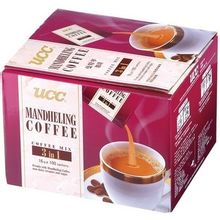
Mantenin is rich in Sumatra, Indonesia, where the special geology and climate cultivate unique characteristics, with quite thick and mellow flavor, and with a more obvious bitter taste and carbon roast taste, bitter, sweet taste is especially good, unique charm. In 1995, UCC Oshima Coffee, Japan's largest coffee company, partnered with PT Gun ung Lintong, the largest coffee maker in Sumatra, Indonesia, to build their first Mantenin coffee farm in Asia, demonstrating Mantenin's importance.
Mocha Coffee
Mocha coffee is produced in Ethiopia, this variety of beans is small and strong, with a unique sour and citrus aroma, more attractive aroma, and glycol with an intoxicating rich finish, unique aroma and soft sour, sweet taste.
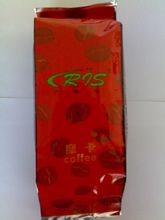
Mocha Brazilian coffee
The best selected from Brazil, which is rich in coffee beans, has a strong sour taste, coupled with the sweet and bitter taste of coffee, the entrance is very smooth, but also with a touch of grass aroma, slightly bitter in the fragrance, smooth and smooth in the aftertaste. Santos is the best of Brazilian coffee. Named after the port of Dos in the state of Sao Paulo, Brazil, the coffee has large grains, high aroma, moderate bitterness, high acidity, soft taste and mild acidity. If you taste it carefully, it will last forever.
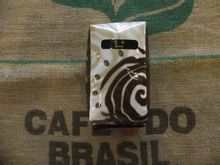
Brazilian Kenyamoca coffee comes from a high-quality Arabica species, and Arabica is also one of the types of coffee in Taiwan. It tastes more mellow and thick, and has a more obvious sour taste. It captures many coffee fans who like this characteristic. It is also a favorite of German people. Yin dry is different from ordinary coffee in that it is dried naturally after washing, which is dried in a natural state for 6 months, and then goes through some formalities, which is different from that of ordinary coffee beans, while Yin dry belongs to medium-roasted beans, which contains less caffeine. Naga Xuefei belongs to the top mocha, and the name is directly translated into English. Yamaijia is the more advanced bean in the Blue Mountain. Mamba combines the unique flavor of Mantenin and Brazilian coffee, rich and full-bodied, with a hint of fragrance. The combination of Mantenin and Brazil, which are soft with each other, is a good combination. Man blue is a mixture of Manning and Blue Mountain at 1:1. When Manning's bitterness meets the slight acid of Blue Mountain, the two neutralize each other, and the smell is mellow.
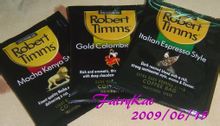
Kenya mocha mint coffee 2012 top ten boutique coffee
The American Fine Coffee Association (SCAA) Baker Association 2012 COTY-Coffees of the Year Competition ended a few days ago. 250 kinds of raw coffee beans from 26 countries in the world's major coffee producing regions took part in the competition for the 2011 / 12 award of "the world's best boutique coffee". After the professional judges blindly evaluated the taste characteristics of the participating coffee in six aspects, such as dry aroma, wet aroma, taste, flavor, aftertaste and mellow thickness, the ten coffees that won the "Best Fine Coffee in the World" award in 2011 / 12 are:
Producer name: Cooperative
Farm name: Oromia
Producing area: Oromia Region (Oromia is a district of Ethiopia, including five major coffee producing areas, Cooperative is a cooperative, and this bean is estimated to have been selected by the Oromia Coffee Cooperative)
Country of origin: Ethiopia (Ethiopia)
Processing method: Washed (washing)
Species name: Heirloom Varietal (heirloon originally means "family heirloom", which should refer to an ancient Ethiopian variety)
Score: 88.41
Producer name: Cafe Granja La Esperanza
Farm name: Cerro Azul
Production area: Trujillo
Country of origin: Colombia (Colombia)
Processing method: Washed (washing)
Species name: Geisha/35000 (Rosa rugosa)
Score: 88.25
Producer name: Rigoberto Herrera Correa
Farm name: Las Margaritas
Production area: Caicedonia
Country of origin: Colombia (Colombia)
Processing method: Washed (washing)
Species name: Geisha/22000 (Rosa rugosa)
Score: 87.84
Producer name: Adado
Farm name: Gedeo Zone, YCFCU
Producing area: South (Gedeo area, which is next to Yega Xuefei on the map)
Country of origin: Ethiopia (Ethiopia)
Processing method: Washed (washing)
Species name: Arabica (Arabica)
Score: 87.28
Producer name: Extreberto Caceres
Farm name: Cielito Lindo
Production area: Santa Barbara
Country of origin: Honduras (Honduras)
Processing method: Washed (washing)
Species name: Pacas (Pacas)
Score: 87
Producer name: Will and Grace Tabios
Farm name: The Rising Sun; Will and Grace Farms
Production area: Ka'u
Country of origin: United States, Hawaii (Hawaii)
Processing method: Semi-Washed (semi-washed)
Species name: Typica (Ironhide)
Score: 86.94
Producer name: Rigoberto Herrera
Farm name: Finca Experimental Banexport-Granja La Esperanza
Production area: Valle Del Cauca
Country of origin: Colombia (Colombia)
Processing method: Washed (washing)
Species name: Geisha (Rosa rugosa)
Score: 86.75
Producer name: Rafael Lozano
Farm name: Finca Buenavista
Production area: San Agustin, Huila
Country of origin: Colombia (Colombia)
Processing method: Washed (washing)
Species name: Caturra (Kaddura)
Score: 86.59
Producer name: Lorie Obra
Farm name: Rusty's Hawaiian
Production area: Ka'u
Country of origin: United States, Hawaii (Hawaii)
Processing method: Washed (washing)
Species name: Typica / Caturra (Tibika / Kaddura)
Score: 86.47
Producer name: Francis and Trinidad Marques
Farm name: Ali'i Hawaiian Hula Hands Coffee
Production area: Ka'u
Country of origin: United States, Hawaii (Hawaii)
Processing method: Washed (washing)
Species name: Typica / Caturra (Tibika / Kaddura)
Score: 86.41
Ethiopia occupies the second place in the top 10, but there is no specific species name. Ethiopia, the country of origin of coffee trees, is known as the "treasure trove of Arabica genes", and many varieties may not have been named yet.
Geisha was also transplanted from Ethiopia, this time on Colombian farms.
Important Notice :
前街咖啡 FrontStreet Coffee has moved to new addredd:
FrontStreet Coffee Address: 315,Donghua East Road,GuangZhou
Tel:020 38364473
- Prev

Espresso
Espresso is basically a male drink, energetic and unpretentious, and an enhanced version of kung fu coffee for real coffee ghosts. Double does not mean doubling the amount of coffee, but the same amount of water, double the amount of coffee powder, coffee still looks like that, but the concentration has doubled. The level is equivalent to that in spirits and perfumes.
- Next

Coffee beans are now ground to drink and taste the original acid, bitterness and fragrance.
Coffee beans from different producing areas change due to climate, environment and soil, and after roasting will bring different aftertaste. If you want to taste the original taste of each kind of coffee bean, you must grind and drink it now. "Black coffee" can not add any sugar and cream to taste the original taste of coffee. Coffee expert Chen Diwei said that he loved coffee and was introduced by his friends 10 years ago.
Related
- What documents do you need to go through to open a coffee shop? coffee shop coffee shop certificate processing process
- How to purchase Coffee beans in small Cafe how to choose a suitable supplier for domestic Coffee supply Company
- How to drink Starbucks Fragrance White Coffee? how to make Australian White Coffee? what Italian coffee beans are recommended?
- The Story of Flora Coffee: the name of Flora Coffee Bean and the implication of the Flowers on Florna Coffee
- How much does a cup of coffee cost? How much is the profit of a cup of coffee? What is the profit of the coffee shop in a year?
- Yunnan small Coffee, known as "fragrant Coffee", introduces the characteristics of Alpine Arabica Coffee producing areas in Yunnan, China
- 2023 latest Starbucks full menu price list how much is a cup of Starbucks coffee what is better to drink the most popular hot and cold drinks recommended
- Starbucks different kinds of Coffee Price list Starbucks menu 2023 Top Ten Best drinks in Starbucks
- Starbucks Spring praise Comprehensive matching Coffee Bean theme Story Packaging implication and taste description
- The cost of a cup of coffee latte American coffee cost price and selling price

